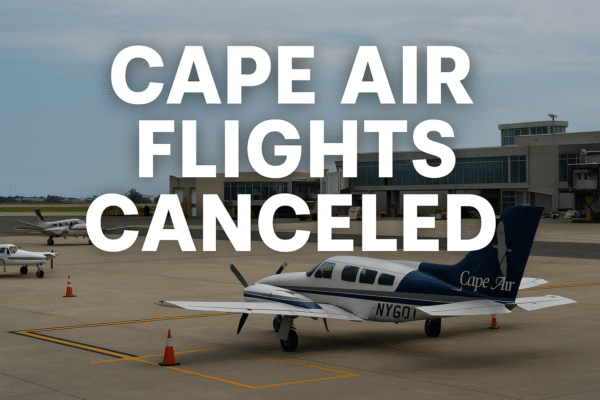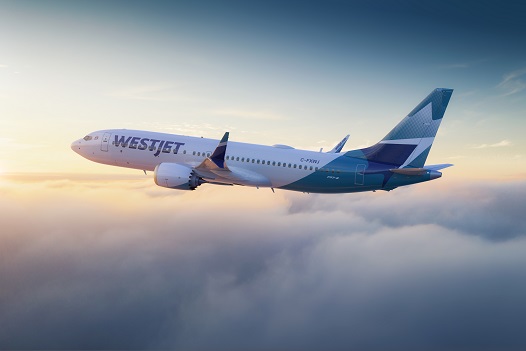CALGARY, CANADA – July 13, 2025 — In 2025, WestJet Airlines is redefining the Canadian domestic air travel landscape, with Calgary, Vancouver, and Edmonton emerging as the airline’s primary operational hubs. The Calgary-based carrier is now the leading force in domestic aviation, offering comprehensive connectivity across Canada’s key regions through a strategically expanded route network.
By centering its operations in Western Canada, WestJet is enhancing not only regional travel convenience but also improving transcontinental accessibility for passengers from British Columbia to the Maritimes. These efforts are part of a broader strategy to strengthen the country’s internal air infrastructure while positioning WestJet as the dominant player in Canada’s domestic skies.
Calgary (YYC): The Nucleus of WestJet’s Operations
At the heart of WestJet’s operations sits Calgary International Airport (YYC), the airline’s largest and most active hub. WestJet now operates 26 of its 37 busiest Canadian domestic routes from Calgary, cementing its importance as a national aviation epicenter.
The Calgary–Vancouver route is WestJet’s single busiest corridor, with 969 monthly roundtrip flights and more than 163,000 available seats in June 2025 alone. The airline’s Calgary–Toronto and Calgary–Halifax services further emphasize Calgary’s role as a gateway for both short and long-haul domestic travelers.
From YYC, WestJet connects smaller communities like Comox, Moncton, Regina, and Yellowknife to Canada’s largest urban centers. This positions Calgary as a vital transit point for business travelers, leisure tourists, and residents of under-served regions.
Vancouver and Edmonton: High-Frequency Hubs Supporting National Mobility
Vancouver International Airport (YVR) is WestJet’s second most significant domestic base. Alongside the Calgary–Vancouver route, which is the busiest in the country, Vancouver is a key node in Western Canada’s flight network. The Vancouver–Toronto route ranks among the top corridors in terms of available seat miles (ASMs), with 141.5 million ASMs in June 2025.
Edmonton International Airport (YEG) has also grown in prominence, with strong service to both Western and Eastern Canada. The Edmonton–Toronto route accounts for 88.6 million ASMs, while intra-provincial routes like Edmonton–Calgary and Edmonton–Kelowna offer high-frequency service for short-haul travelers. In total, YEG supports more than 1,000 monthly domestic WestJet flights, playing a crucial role in intra-provincial mobility.
Top WestJet Domestic Routes by Volume and Capacity
By Flights (June 2025):
- Vancouver–Calgary: 969 flights
- Calgary–Toronto: 587 flights
- Calgary–Victoria: 460 flights
- Winnipeg–Calgary: 450 flights
- Edmonton–Vancouver: 419 flights
By Seat Capacity:
- Vancouver–Calgary: 163,512 seats
- Calgary–Toronto: 97,698 seats
- Winnipeg–Calgary: 71,952 seats
- Calgary–Victoria: 71,403 seats
- Edmonton–Vancouver: 70,521 seats
By Available Seat Miles (ASMs):
- Calgary–Toronto: 163.7 million ASMs
- Toronto–Vancouver: 141.5 million ASMs
- Edmonton–Toronto: 88.6 million ASMs
- Halifax–Calgary: 73.4 million ASMs
- Ottawa–Calgary: 64 million ASMs
These figures highlight how WestJet has concentrated its capacity and network strength in key corridors that balance business travel demand, tourism appeal, and regional accessibility.
Strategic Trends in WestJet’s Network
WestJet’s 2025 strategy leans heavily into Western Canada, where it enjoys strong market share and brand loyalty. While Calgary dominates as its central hub, Toronto, Montreal, Halifax, and Ottawa are vital endpoints for the airline’s transcontinental routes.
Despite a less concentrated presence in Eastern Canada compared to Air Canada, WestJet maintains frequent flights between Toronto and key Western cities like Calgary, Edmonton, and Vancouver, ensuring nationwide connectivity. These long-haul routes are served by larger aircraft, contributing significantly to the carrier’s ASM totals and maximizing travel efficiency.
At the regional level, WestJet continues to support short-haul routes between cities like Kelowna, Regina, Saskatoon, and Victoria, with high frequencies but lower total ASMs—ideal for commuters, weekend travelers, and tourism flows within provinces.
Enhancing Canada’s Aviation Infrastructure
WestJet’s expanded domestic network in 2025 plays a critical role in supporting Canada’s internal mobility, particularly as demand for domestic leisure and business travel surges in a post-pandemic environment. According to Transport Canada’s projections, domestic passenger volumes are expected to exceed pre-2020 levels by the end of 2025, making robust airline networks more essential than ever.
By focusing growth on frequency, efficiency, and regional outreach, WestJet is providing accessible air service to both major cities and smaller communities. This aligns with Canada’s broader transportation objectives, including sustainable travel, regional development, and interprovincial commerce.
Looking Ahead: A More Connected Canada
With nearly 10,000 monthly flights and more than a million seats across its domestic network in June 2025, WestJet is driving the modernization of Canadian travel. Its Calgary-centric model, supported by Vancouver and Edmonton, allows the airline to serve an increasingly mobile Canadian population with flexibility, affordability, and reliability.
As Canada prepares for another record-breaking year in domestic travel, WestJet’s aggressive network design ensures that no corner of the country remains out of reach—from the Atlantic provinces to the Pacific Coast, and from Northern cities to Southern metropolises.
For more travel news like this, keep reading Global Travel Wire

















